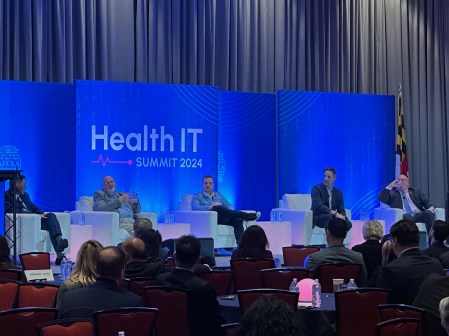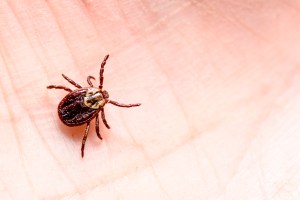HHS pairs new AI tools with federal data to treat cancer, Lyme disease

Officials at the Department of Health and Human Services think they now have a way to combine the power of artificial intelligence with public data to make it easier for patients to find cutting-edge treatments for complex diseases.
Officials from the HHS Office of the Chief Technology Officer said Thursday they have completed a 14-week project — dubbed The Opportunity Project (TOP) Health tech sprint — that blended open federal data with AI technology to streamline research, better identify new treatments and disseminate new information on conditions like cancer and Lyme disease.
“At HHS, we recognize that Federal government alone cannot solve our most important and complex challenges,” Ed Simcox, HHS CTO and acting CIO, said in a blog post published Thursday. “The TOP Health sprint is a valuable step in leveraging skills from industry with public resources to promote better health outcomes.”
But officials also said they won’t be able to share the results until the government reopens in its entirety. An HHS spokesperson told FedScoop that the demo day would be hosted by the Census Bureau, which originally crafted the TOP methodologies used to develop the pilot. But the Census Bureau, as part of the Department of Commerce, hasn’t been funded and demonstrations of the pilot have been delayed as a result.
HHS also conducted the project with the Presidential Innovation Fellows, which is operated by the General Services Administration, an agency that is impacted in the partial shutdown.
The TOP Health project was developed around two central challenges: designing digital tools to help patients find experimental therapies for treatment, as well as helping developer locate patients that would be eligible for treatments; and using emerging technologies like AI to create tools that facilitate data sharing for the education and prevention of Lyme disease and other tick-borne maladies.
Over the course of the 14-week sprint, companies like Microsoft and Oracle, alongside the Department of Energy’s Oak Ridge National Laboratory and stakeholders across the health care space, divided into 11 teams, crafting new tech tools fueled by curated data sets from Healthdata.gov, data.gov and other federal sources provided by HHS, the Department of Veterans Affairs and the PIF program.
Those tools leveraged AI to better match clinical treatment trials with cancer patients and make it easier to share trial data and symptom information for those with Lyme disease.
Other teams designed apps to track information on the effectiveness of treatments for complex conditions and the location of potential disease-carrying ticks, and provide educational information on Lyme disease.
The pilot’s completion follows the recent signing of the Open, Permanent, Electronic, and Necessary (OPEN) Government Data Act into law. The law requires agencies to publish their data in machine-readable formats that are consistent across government, potentially making it easier for technologies like AI to use the data to find new solutions for a variety of real-world challenges.





